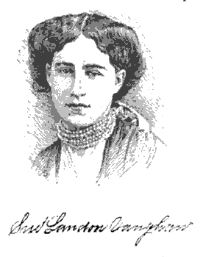
Arlington National Cemetery is one of two cemeteries in the United States National Cemetery System that are maintained by the United States Army. Nearly 400,000 people are buried in its 639 acres in Arlington County, Virginia.

Franconia is a census-designated place (CDP) in Fairfax County, Virginia, United States. The population was 18,943 at the 2020 census.

Rosslyn is a heavily urbanized unincorporated area in Northern Virginia located in the northeastern corner of Arlington County, Virginia, north of Arlington National Cemetery and directly across the Potomac River from Georgetown and Foggy Bottom in Washington, D.C.

Arlington House is the historic family home of George Washington Parke Custis, the ward of his grandmother Martha Dandridge Custis Washington and her second husband, George Washington, an American Revolutionary hero, one of the founding fathers of the United States, and its first president. Custis built Arlington House to be a memorial to his guardian. His own father John Parke Custis named him after his future guardian, George Washington, and had named his estate, "Mount Washington."

Capon Chapel, also historically known as Capon Baptist Chapel and Capon Chapel Church, is a mid-19th century United Methodist church located near to the town of Capon Bridge, West Virginia, in the United States. Capon Chapel is one of the oldest existing log churches in Hampshire County, along with Mount Bethel Church and Old Pine Church.

The Northern Virginia trolleys were the network of electric streetcars that moved people around the Northern Virginia suburbs of Washington, D.C., from 1892 to 1941. They consisted of six lines operated by as many as three separate companies connecting Rosslyn, Great Falls, Bluemont, Mount Vernon, Fairfax, Camp Humphries, and Nauck across the Potomac River to Washington, D.C.

Woodlawn is a historic house located in Fairfax County, Virginia. Originally a part of Mount Vernon, George Washington's historic plantation estate, it was subdivided in the 19th century by abolitionists to demonstrate the viability of a free labor system. The address is now 9000 Richmond Highway, Alexandria, Virginia, but due to expansion of Fort Belvoir and reconstruction of historic Route 1, access is via Woodlawn Road slightly south of Jeff Todd Way/State Route 235. The house is a designated National Historic Landmark, primarily for its association with the Washington family, but also for the role it played in the historic preservation movement. It is now a museum property owned and managed by the National Trust for Historic Preservation.
Warrenton Presbyterian Church is a Presbyterian congregation in Warrenton, Virginia that was organized around 1780.

Hickory Withe Presbyterian Church is a member congregation of the Presbyterian Church in America, located at 2420 Donelson Drive, Hickory Withe, Tennessee. Two churches, Prosperity Presbyterian Church and Mount Pleasant Presbyterian Church, merged in 1907 to form Hickory Withe Presbyterian Church.
Bells Crossroad is an unincorporated community in Spotsylvania County, in the U.S. state of Virginia. This community is centered on the intersection of Stubbs Bridge Road and Lawyer's Road.

Wentworth Methodist Episcopal Church, South and Cemetery, also known as Wentworth United Methodist Church, is a historic Methodist church located at Wentworth, Rockingham County, North Carolina.

Daniels Recital Hall, formerly the First United Methodist Church, now The Sanctuary, is a preserved church sanctuary that has been re-purposed into a recital hall. It was built in 1908 on the southwest corner of Fifth Avenue and Marion Street in Seattle, Washington, United States. The recital hall opened in 2009 hosting concerts that use the already existing church acoustics.

Old Pine Church, also historically known as Mill Church, Nicholas Church, and Pine Church, is a mid-19th century church located near to Purgitsville, West Virginia, United States. It is among the earliest extant log churches in Hampshire County, along with Capon Chapel and Mount Bethel Church.

Unitarian Universalist Church of Arlington (UUCA), historically known as the Unitarian Church of Arlington, is a Unitarian Universalist church located at 4444 Arlington Boulevard in Arlington County, Virginia. Founded in 1948, UUCA was the first Unitarian church in Washington, D.C.'s suburbs. Throughout its history, UUCA has taken part in progressive causes from the Civil Rights Movement to the legalization of same-sex marriage in Virginia. During the Civil Rights Movement, UUCA was the only Virginia church to speak out in favor of racial integration. UUCA's sanctuary building, designed by local architect Charles M. Goodman in 1964, is a concrete Brutalist structure that was listed on the National Register of Historic Places and Virginia Landmarks Register in 2014. It is one of only three church buildings designed by Goodman and the only one in Virginia.

Hebron Church is a mid-19th-century Lutheran church in Intermont, Hampshire County, in the U.S. state of West Virginia. Hebron Church was founded in 1786 by German settlers in the Cacapon River Valley, making it the first Lutheran church west of the Shenandoah Valley. The congregation worshiped in a log church, which initially served both Lutheran and Reformed denominations. Its congregation was originally German-speaking; the church's documents and religious services were in German until 1821, when records and sermons transitioned to English.

The Basilica of Saint Mary in the Old Town Old and Historic District, of Alexandria, Virginia, and is a minor basilica and parish church of the Roman Catholic Diocese of Arlington in Virginia. The Basilica of Saint Mary is the oldest Roman Catholic church in the Commonwealth of Virginia. It was founded in 1795 by the Very Reverend Francis Ignatius Neale, then the president of Georgetown University, in present-day western Washington, D.C.

Sue Landon Vaughan was an American artist and writer best known for falsely claiming to have originated the Memorial Day holiday.
T. S. Ary was the 18th Director of the U.S. Bureau of Mines.















